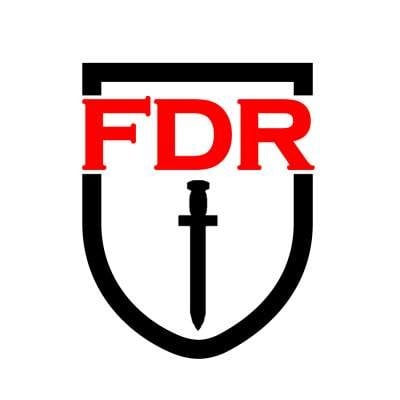Digital False Flag / Digital Plandemic to do What
Save Souls from a Tshirt: https://sjwellfire.com/shop/
Join our newsletter: https://sjwellfire.com/
Gab: https://gab.com/sjwellfire.
Support us to save souls via the news: https://sjwellfire.com/support/.
or [email protected] paypal
Prepare: https://sjwellfire.com/partners/
Cyber Polygon is an annual international cybersecurity exercise organized by the cybersecurity subsidiary of the Russian multinational cybersecurity firm Kaspersky. It aims to simulate and test the response capabilities of organizations and governments in the face of large-scale cyber threats and attacks. The exercise involves various stakeholders, including businesses, government agencies, and cybersecurity experts, who collaborate to enhance their cybersecurity preparedness and resilience.
The World Economic Forum (WEF) has expressed concerns about the potential impact of cyber threats and has highlighted the need for global cooperation in addressing cybersecurity challenges. The WEF, along with other organizations, has been involved in supporting and participating in events like Cyber Polygon. This appears to a great false flag opportunity to bring down the old system, take control of the internet, launch FedNow and CBDC, and give you Digital ID.
The concept of a "digital pandemic" is often associated with the rapid spread and severity of cyber attacks, similar to the way a biological pandemic affects individuals and societies. The concern is that a widespread and severe cyber attack or a series of coordinated attacks could disrupt critical infrastructure, financial systems, and essential services, leading to significant societal and economic consequences.
In the context of a digital pandemic, the worries about what could be taken down primarily revolve around critical infrastructure, financial systems, and essential services. Cyber attacks targeting these sectors could potentially disrupt power grids, transportation systems, healthcare facilities, financial institutions, and government services. Such disruptions can have severe consequences, including financial losses, compromised personal data, disruption of public services, and even threats to public safety.
Linking this to digital identification (ID), the concerns arise from the potential vulnerability of digital ID systems to cyber attacks. Digital ID systems, which aim to provide a unique identifier for individuals, are increasingly being implemented for various purposes, such as accessing services, verifying identities, and facilitating transactions. However, if these systems are not adequately protected, they could become targets for cyber attacks, potentially leading to identity theft, fraud, and unauthorized access to personal information. Create the problem, force everyone to have an ID to get on the net.
Compromised digital ID systems could also have far-reaching consequences, as they are often linked to financial accounts, personal records, and sensitive information. The worry is that if digital ID systems are targeted and compromised during a digital pandemic scenario, it could exacerbate the impact of cyber attacks, making it easier for malicious actors to exploit personal information and gain unauthorized access to individuals' financial accounts, sensitive data, or even critical systems.
Therefore, safeguarding digital ID systems and ensuring their resilience against cyber threats is crucial in mitigating the risks associated with a digital pandemic scenario. This requires robust cybersecurity measures, encryption protocols, secure authentication mechanisms, and continuous monitoring to detect and respond to potential attacks. Additionally, collaboration between governments, organizations, and cybersecurity experts is essential to develop and implement effective strategies for protecting digital ID systems and maintaining trust in their usage.
Deep Fakes probably will be used to make you have an ID on the net. Deep fakes refer to manipulated or synthesized media, such as videos or images, that use artificial intelligence (AI) techniques to create highly realistic and convincing forgeries. The concern surrounding deep fakes stems from their potential to deceive and manipulate individuals or the public, leading to various negative consequences. Here are some of the worries associated with deep fakes:
Misinformation and Disinformation: Deep fakes can be used to create convincing fake videos or images that falsely attribute statements or actions to individuals. This can lead to the spread of misinformation or disinformation, potentially causing public confusion, damage to reputations, or manipulation of public opinion.
Political Manipulation: Deep fakes have the potential to be used as a tool for political manipulation. By creating realistic videos or audio recordings of politicians or public figures, malicious actors can spread false narratives or fabricate controversial statements, aiming to influence elections, sow discord, or undermine trust in democratic processes.
Fraud and Scams: Deep fakes can be utilized for fraudulent purposes, such as impersonating individuals for financial gain or committing identity theft. Scammers can create convincing videos or voice recordings of someone, leading to potential financial losses or reputational damage.
Privacy Concerns: Deep fakes raise privacy concerns as they can be used to generate realistic-looking images or videos of individuals without their consent. This can violate personal privacy and lead to potential harassment, blackmail, or other forms of harm.
In response to the worries surrounding deep fakes, there is a need for measures to control their negative impact. Some potential approaches include:
Technological Solutions: Developing advanced algorithms and tools to detect and verify the authenticity of media content, enabling users to identify and differentiate between genuine and manipulated media.
Awareness and Media Literacy: Promoting media literacy and educating the public about the existence and potential dangers of deep fakes, enabling individuals to critically evaluate media content and recognize potential manipulation.
Policy and Regulation: Governments and tech companies can work together to establish guidelines, standards, and regulations to address the ethical and legal implications of deep fakes. This can involve implementing safeguards to prevent the malicious use of deep fakes and holding accountable those who create and distribute deceptive content.
Collaboration and Research: Encouraging collaboration between researchers, technologists, policymakers, and industry stakeholders to continuously develop and improve methods for detecting and mitigating deep fakes.
Addressing the concerns related to deep fakes requires a multi-faceted approach that combines technological advancements, public awareness, and responsible governance to minimize the negative impact while protecting freedom of expression and creativity.
In Revelation 12:17 of the King James Version (KJV) of the Bible, it states:
"And the dragon was wroth with the woman, and went to make war with the remnant of her seed, which keep the commandments of God, and have the testimony of Jesus Christ."
This verse is part of a larger passage in Revelation that describes a battle between a woman (church), representing the faithful followers of God, and a dragon, representing Satan or evil forces. The "seed" mentioned here refers to the descendants or offspring of the woman and God’s creation, who are described as those who keep the commandments of God and have the testimony of Jesus Christ.
The passage signifies the ongoing spiritual and Pharmacia conflict between good and evil, where the dragon, representing Satan, seeks to wage war against the faithful believers and followers of God. It highlights the opposition and hostility faced by those who remain faithful to God's commandments and hold fast to their faith in Jesus Christ. The want to turn you into a cyborg.
Show less




















